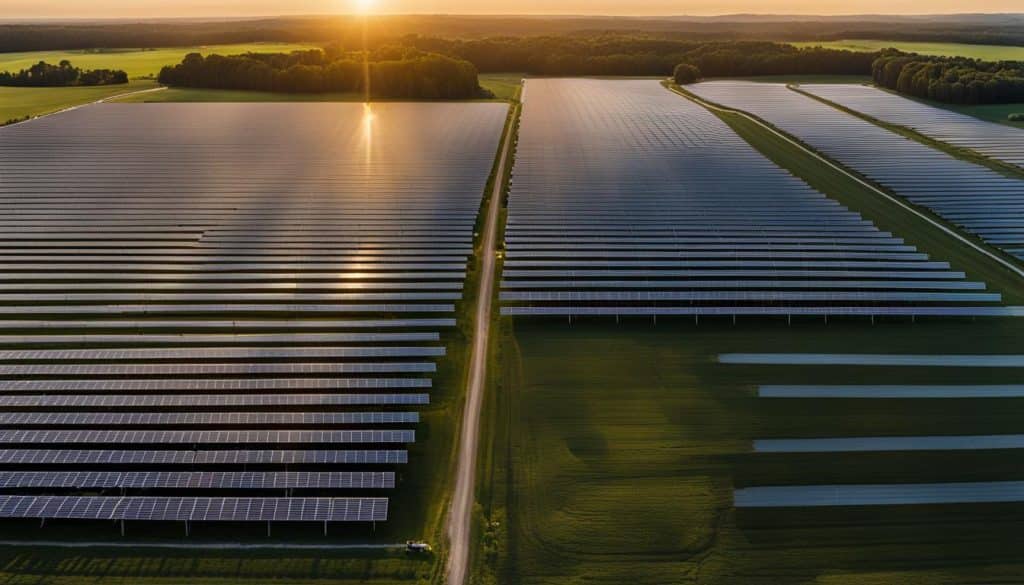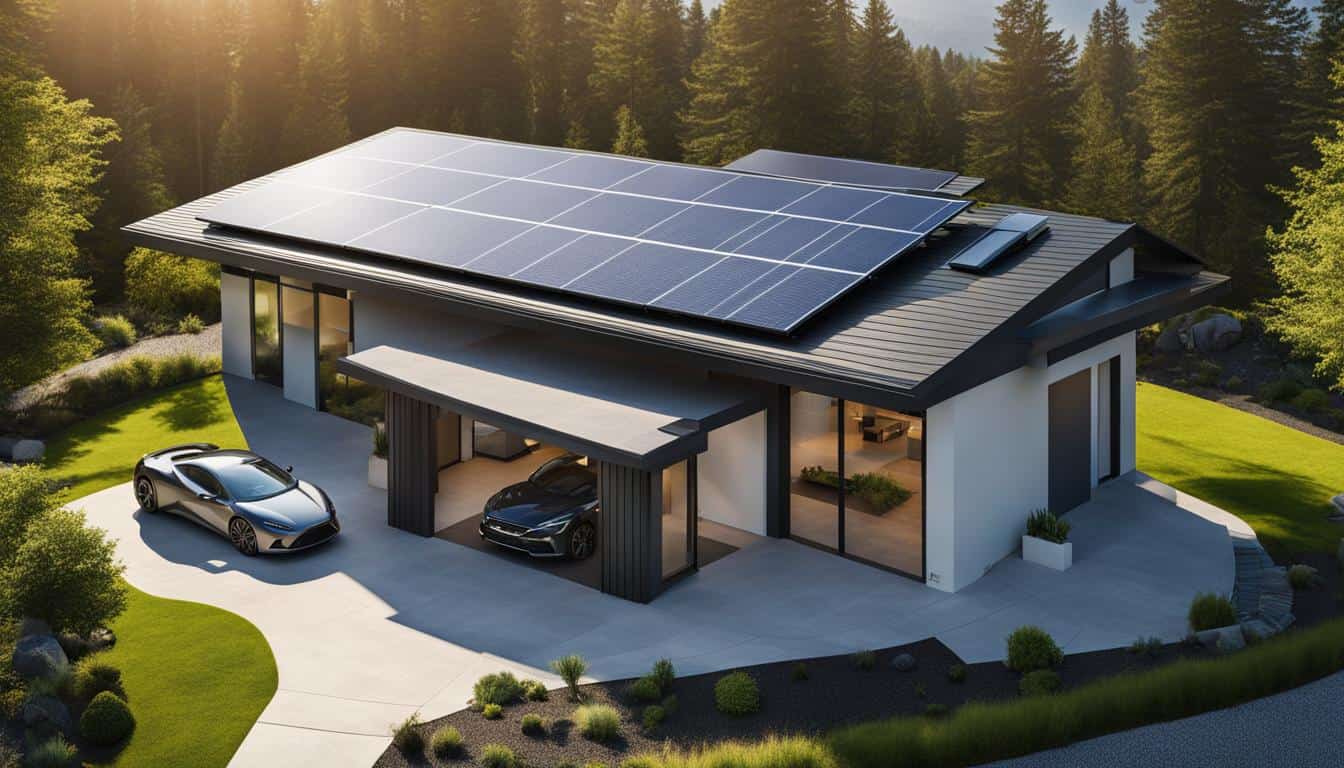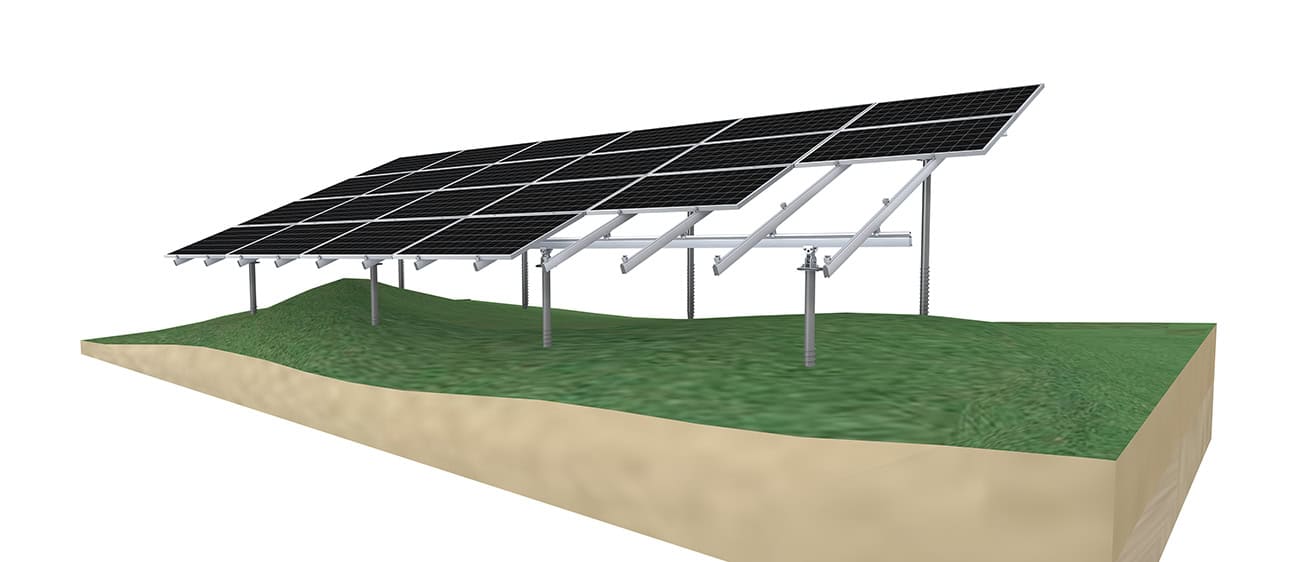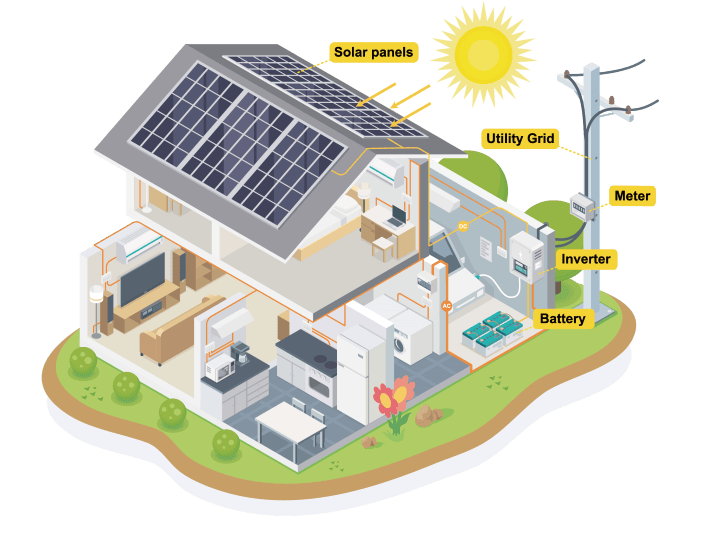When it comes to investing in solar panels for your home or business, the mounting system you choose is just as important as the panels themselves. The right mounting system will not only keep your panels securely in place but also help to optimize their efficiency and energy production. This is where solar panel mounting brackets come into play.
Solar panel mounting brackets are specially designed to provide a secure and stable foundation for solar panels, whether they’re installed on the roof or the ground. They come in a variety of types and styles to accommodate different installation requirements and panel sizes, and are engineered for long-term durability to protect your investment for years to come.
In this article, we’ll dive deeper into solar panel mounting brackets, exploring their benefits, types, components, installation process, and maintenance requirements. We’ll also compare different mounting options and provide guidance on choosing the right system for your specific needs.
Key Takeaways:
- Solar panel mounting brackets are essential for securing and optimizing solar panel installations.
- They come in various types and styles to accommodate different installation requirements and panel sizes.
- A complete solar panel mounting kit typically includes brackets, rails, clamps, and hardware.
- The right mounting system should be customized based on site specificis, panel size, and installation requirements.
- Maintaining solar panel mounting brackets is crucial to ensure their longevity.
Why Choose Solar Panel Mounting Brackets?
At Megawa Solar, we believe that solar panel mounting brackets are the best option for securing solar panels to residential or commercial roofs or the ground. Here are some reasons why:
- Solar panel brackets are specifically designed for the job- they have a unique shape that ensures the panels stay in place under harsh weather conditions.
- Solar panel brackets offer increased stability and durability, making sure solar panels can withstand the pressure of heavy rains, winds, and stormy weather conditions.
- When you use right solar panel brackets, you won’t have to worry about potential leaks in your roof or damage to your solar panels over time. Right brackets offer a secure, long-lasting solution that will keep your investment safe for years to come.
- Our solar panel brackets are easy to install, making your solar panel installation process much smoother and faster. We use custom-made brackets that are optimized for your specific needs.
- Using solar panel brackets can actually help to increase the energy output of your panels. The angle and orientation of the panels can be optimized to catch the most sunlight.
At Megawa Solar, we offer a range of solar panel brackets to suit all types of installations. From adjustable brackets for various angles to roof and ground mounting brackets, we have the perfect solution to ensure your solar panels are secure and optimized for energy output. Plus, our expert team can guide you in selecting the right solar panel mounting system for your setup and installation requirements.
Types of Solar Panel Mounting Brackets

At Megawa Solar, we offer a variety of solar panel mounting brackets to suit different installation needs. Whether you are installing solar panels on a residential rooftop or a large-scale ground-based system, we have the right brackets for you. Let’s take a closer look at the different types of solar panel mounting brackets we offer:
| Adjustable Solar Panel Brackets | Roof Mounting Brackets for Solar Panels | Ground Mounting Brackets for Solar Panels |
|---|---|---|
| Adjustable brackets provide flexibility in solar panel positioning, allowing for different angles and orientations to maximize energy production. | Roof mounting brackets are ideal for residential installations and are designed to fit a variety of roof types. Our brackets are universial, durable, and easy to install, providing a secure and stable base for solar panels. | Ground mounting brackets are designed for larger-scale solar panel installations and are suitable for uneven terrain. Our brackets are made from heavy-duty materials and are engineered to withstand strong winds, making them a reliable choice for ground-mounted systems. |
No matter what type of solar panel installation you have in mind, we have the right mounting brackets to get the job done. Our expert team can help you choose the best brackets for your project and provide support throughout the installation process.
Components of a Solar Panel Mounting Kit
When it comes to installing solar panels, a mounting kit is an essential component that provides a secure foundation for your solar system. A solar panel mounting kit typically consists of a variety of hardware and components that will ensure a safe and stable installation. Let’s take a closer look at what a typical solar panel mounting kit includes:
| Component | Description |
|---|---|
| Mounting Brackets | The mounting brackets are designed to attach the solar panels to the mounting rail, which is secured to the roof or ground. They come in different shapes and sizes to accommodate different types of solar panels and mounting surfaces, such as adjustable brackets for different angles or roof mounting brackets for residential installations. |
| Mounting Rails | The mounting rails are the horizontal supports that span between the mounting brackets. They are typically made of aluminum, which is lightweight and durable, and designed to withstand harsh weather conditions. The length of the rails will depend on the number of panels being installed and the spacing between them. |
| Clamps | The clamps are used to attach the solar panels to the mounting rails. They come in different sizes and shapes to fit different types of panels and rails, ensuring a secure and stable connection. Some clamps are adjustable, allowing for easy installation and panel adjustments in the future. |
| Hardware | Hardware refers to the nuts, bolts, and other fasteners that are used to secure the mounting brackets, rails, and clamps together. It is essential to use high-quality hardware to ensure a strong and secure installation. |
When choosing a solar panel mounting kit, it is essential to ensure that all necessary components are included and that they are of high quality. A reputable supplier will provide a comprehensive kit that meets your needs and the specific requirements of your installation.
How to Choose the Right Solar Panel Mounting System

When it comes to selecting the right solar panel bracket system, there are several key factors to consider. As every solar panel installation is unique, there is no one-size-fits-all solution for mounting brackets.
First, it is essential to consider the type of roof or ground surface on which the panels will be mounted. For example, a flat roof may require a ballasted system, while a sloped roof may call for a tilted or adjustable bracket. Ground-mounted systems may require a different approach altogether.
Second, the size and weight of the solar panels being installed should be taken into consideration. Heavy panels may require additional reinforcement or support, while larger panels may require longer rails or additional brackets for stability.
Finally, the orientation and angle of the panels should be optimized for maximum energy production. The solar panel bracket system should provide flexibility in adjusting the angle for seasonal changes in sun exposure.
Customized Approach
At Megawa Solar, we understand that each solar installation requires a customized approach. Our team of experts can help you choose the right solar panel bracket system to meet your specific needs. With years of experience in the solar industry, we have the knowledge and expertise to ensure a secure and efficient solar installation that will last for years to come.
Installation Process of Solar Panel Mounting Brackets
Now that we have covered the importance and benefits of using solar panel mounting brackets, let us delve into the installation process.
- The first step in installing solar panel mounting brackets is to choose the appropriate location for your solar panel installation. Ensure that the location is free of any shading that may affect the efficiency of your solar panels.
- Next, prepare the surface where you will attach the mounting brackets. For roof installations, this involves cleaning the area, removing any debris, and inspecting the roof for any damage or leaks. If you are installing ground-mounted solar panels, prepare the ground by making sure it is level and stable.
- Once the surface is prepared, mark the locations where you will attach the mounting brackets. Make sure to follow the specifications of the solar panel manufacturer and the mounting bracket manufacturer.
- Attach the mounting brackets to the surface using the appropriate hardware. For roof installations, use flashing to seal the roof penetration and prevent water leaks.
- After the mounting brackets are secure, attach the rails to the mounting brackets using the provided bolts and screws.
- Finally, attach the solar panels to the rails using the clamps provided with the solar panel mounting kit. Make sure to tighten the clamps to the appropriate torque specification to prevent any movement of the panels.
It is important to note that the installation process may vary depending on the type of mounting bracket and solar panel system you are using. Always refer to the manufacturer’s instructions and seek professional help if you are unsure about any step of the installation process.
Tips for Installing Solar Panel Mounting Brackets
Here are some additional tips to ensure a successful installation:
- Use a stud finder to locate the rafters or trusses if installing roof-mounted solar panels. This will ensure that the mounting brackets are securely attached to the structure of the roof.
- Apply sealant around the flashing to prevent water leaks and ensure a long-lasting installation.
- Use caution when working on a roof or elevated surface. Always use proper safety equipment, such as a harness, and work with a partner.
We cannot stress enough the importance of ensuring a proper and secure installation of solar panel mounting brackets. A poorly installed system may result in damage to property, reduced efficiency of the solar panels, and even personal injury. If you are unsure about any step of the installation process, seek professional help.
Maintenance and Upkeep of Solar Panel Mounting Brackets
It’s essential to keep it well-maintained to ensure maximum efficiency and longevity of the components. Solar panel mounting brackets do not require much maintenance, but it’s vital to inspect them regularly and perform any necessary upkeep tasks.
Regular Inspections
Inspecting your solar panel mounting brackets on a regular basis can help prevent small issues from turning into larger problems. We recommend inspecting the brackets at least once a year, or after any extreme weather events, such as heavy rainstorms or snowfall.
During the inspection, look for any signs of wear and tear, such as rust or corrosion on the brackets, rails, clamps, or hardware. Check for any loose connections or bolts that may need tightening. Also, make sure the panels are securely fastened to the brackets and do not show any signs of shifting or misalignment.
Tightening Connections
As with any mechanical system, solar panel mounting brackets may experience some loosening over time. To ensure the brackets remain secure and stable, it’s important to check and tighten any loose connections or bolts periodically.
We recommend using a torque wrench to tighten the connections to the manufacturer’s specifications. Over-tightening can damage the components, while under-tightening can cause the panels to shift or become misaligned.
Summary
Regular maintenance and upkeep of solar panel mounting brackets are essential to ensure a reliable and efficient solar panel system. Inspecting the brackets, cleaning them, and tightening any loose connections can help prevent costly repairs and extend the lifespan of the components. By following these simple maintenance tips, you can enjoy the benefits of your solar panel system for many years to come.

Troubleshooting Common Issues with Solar Panel Mounting Brackets
While solar panel mounting brackets are a reliable and efficient way to secure your solar panels, like any installation, problems can sometimes arise. In this section, we will address common issues with solar panel mounting brackets and provide troubleshooting tips to help you resolve them quickly and effectively.
Misalignment of Solar Panels
If your solar panels are misaligned on their mounting brackets, they may not be able to efficiently collect sunlight and produce energy. To correct this issue, check the alignment of your panels and adjust the brackets as necessary. You can also use a solar panel alignment tool to ensure that each panel is perfectly aligned for optimal energy production.
Loose Connections
Loose connections can cause your solar panels to shift or become disconnected from their mounting brackets. To fix this issue, inspect all of the connections on your solar panel mounting system and tighten any loose bolts or screws. This will help ensure that your panels remain secure and stable, even during high winds or severe weather conditions.
Shifting Panels
If your solar panels are shifting or moving on their mounting brackets, this can cause damage to your panels or their wiring. To address this issue, first check that the brackets are securely attached to the mounting surface. You can also install additional clamps or brackets to provide extra support and stability for your panels.
Conclusion
By following these troubleshooting tips, you can help ensure that your solar panel mounting brackets are functioning properly and efficiently. Regular maintenance and inspections can help prevent these issues from occurring in the first place, so be sure to keep up with your solar panel maintenance to maximize the lifespan and energy production of your system.
Maximizing Energy Production with Solar Panel Mounting Brackets
Investing in high-quality solar panel mounting brackets is not only crucial for securing your solar panels, but it also plays a vital role in maximizing your energy production. By optimizing panel orientation, reducing shading, and improving airflow around the panels, you can significantly increase the efficiency of your solar installation.
Let’s take a closer look at some of the key factors that contribute to maximizing energy production with solar panel mounting brackets.
Panel Orientation
The orientation of your solar panels can significantly impact their energy production. Ideally, solar panels should be installed facing south in the northern hemisphere and north in the southern hemisphere to receive maximum sunlight. However, this may not always be possible due to shading or other site-specific factors.
Adjustable solar panel mounting brackets can be an effective solution to this problem as they allow you to tilt your panels to achieve the optimal angle for capturing sunlight. By adjusting the angle based on the season, you can improve your energy production by up to 25%. For example, in the summer, a steeper angle will help reduce the impact of shading from nearby structures or trees.
Reducing Shading
Even a small amount of shading can significantly reduce the energy production of your solar panels. When solar cells are shaded, they produce less electricity, which can have a cascading effect on the entire system. By installing solar panel mounting brackets that elevate the panels off the roof or ground, you can reduce shading and increase energy output.
Additionally, ground-mounted solar panels offer the advantage of being able to position them in a more open and unshaded location compared to roof-mounted panels. By considering shading from nearby buildings, trees, and other obstructions, you can choose the optimal location for your solar panels to maximize energy production.
Improving Airflow
Proper airflow around your solar panels is essential for maintaining their efficiency and longevity. Without adequate ventilation, solar panels can overheat, which can cause damage to the panels and reduce their energy production. This is especially true for roof-mounted solar panels as they can trap heat between the panels and the roof.
Solar panel mounting brackets that elevate the panels can help increase airflow and prevent overheating. Additionally, installing panels with a small gap between them can promote better ventilation. By improving airflow, you can help extend the life of your solar panels and maximize their energy production.
By considering these factors and investing in high-quality solar panel mounting brackets, you can significantly increase the efficiency and longevity of your solar installation. Whether you are installing panels on your roof or the ground, a customized approach to selecting and installing mounting brackets can make a significant difference in your energy production.
Conclusion
Investing in high-quality solar panel mounting brackets is crucial in ensuring a secure and efficient solar installation. As we have discussed, dedicated solar panel mounting brackets offer increased stability, durability, and ease of installation compared to other mounting options.
When selecting the appropriate solar mounting system, it is important to consider factors such as roof type, panel size, and installation requirements. A customized approach will help maximize the efficiency of your solar panels and ensure that your investment is well-protected.
Maintaining and inspecting your solar mounting brackets regularly is also essential in prolonging their longevity and efficiency. Simple tasks such as cleaning and tightening connections can go a long way in preventing issues such as misalignment or shifting panels.
By using solar panel mounting brackets, you can also maximize your energy production by optimizing panel orientation, reducing shading, and improving airflow around the panels. All of these benefits result in a more sustainable and cost-effective energy solution for your home or business.
Overall, we highly recommend using high-quality solar panel mounting brackets to secure your investment and maximize energy production. Thank you for considering this important aspect of solar panel installation.
FAQorientation, reduce shading, and improve airflow around the panels. These factors contribute to maximizing energy production from solar installations.





